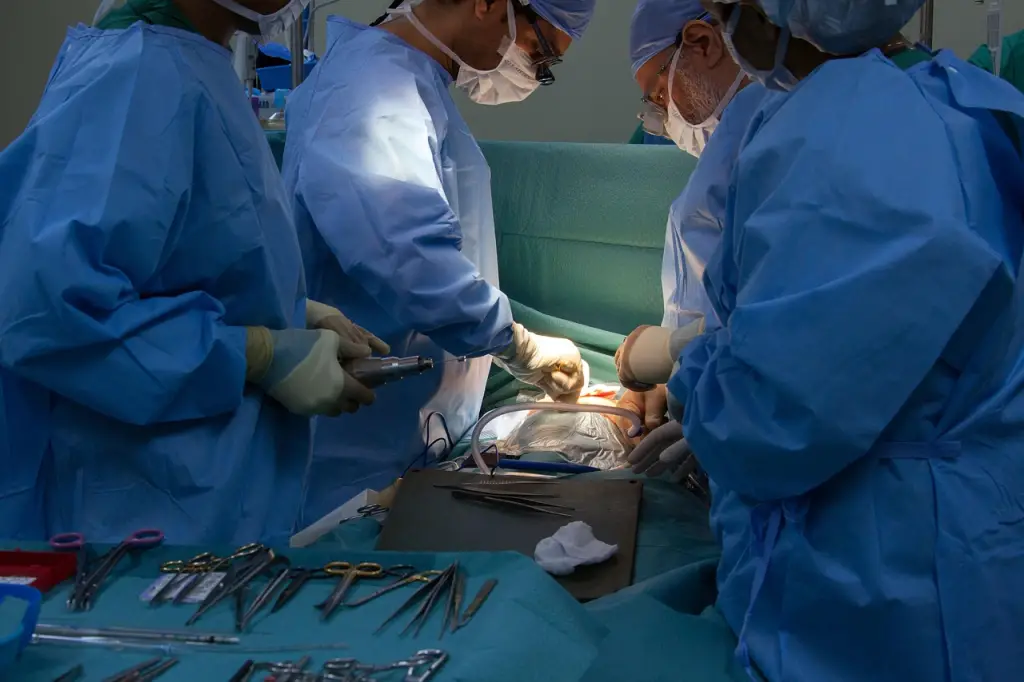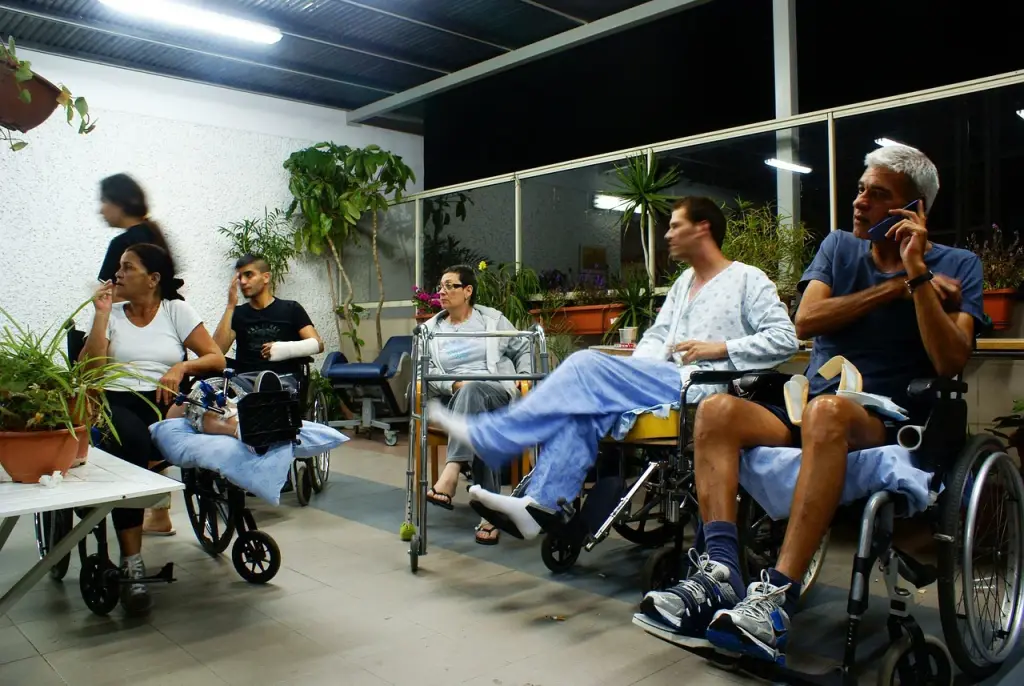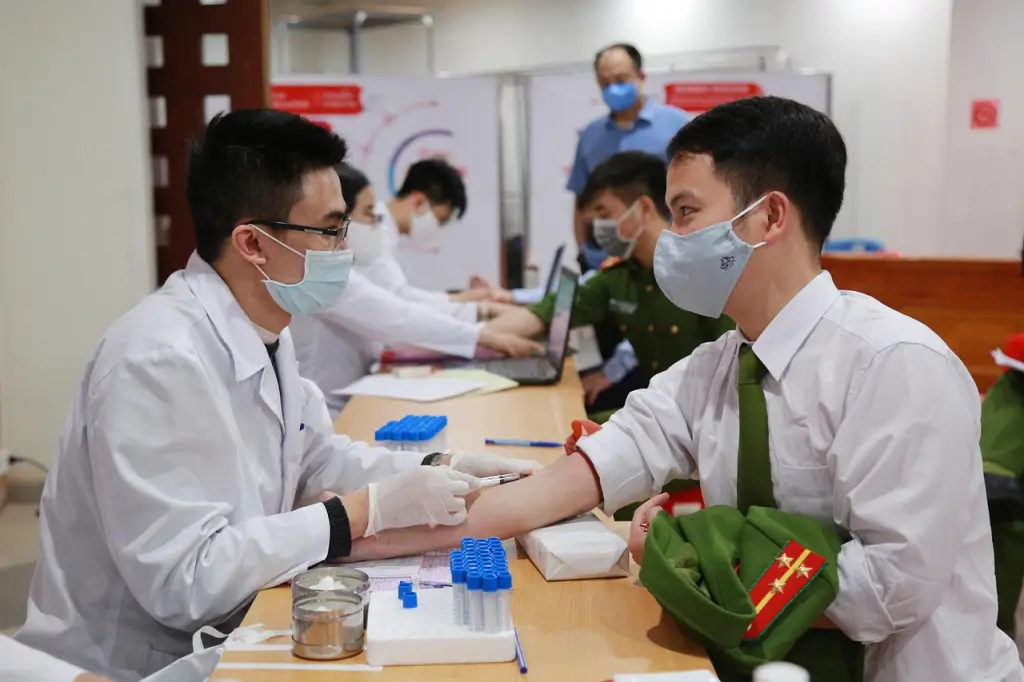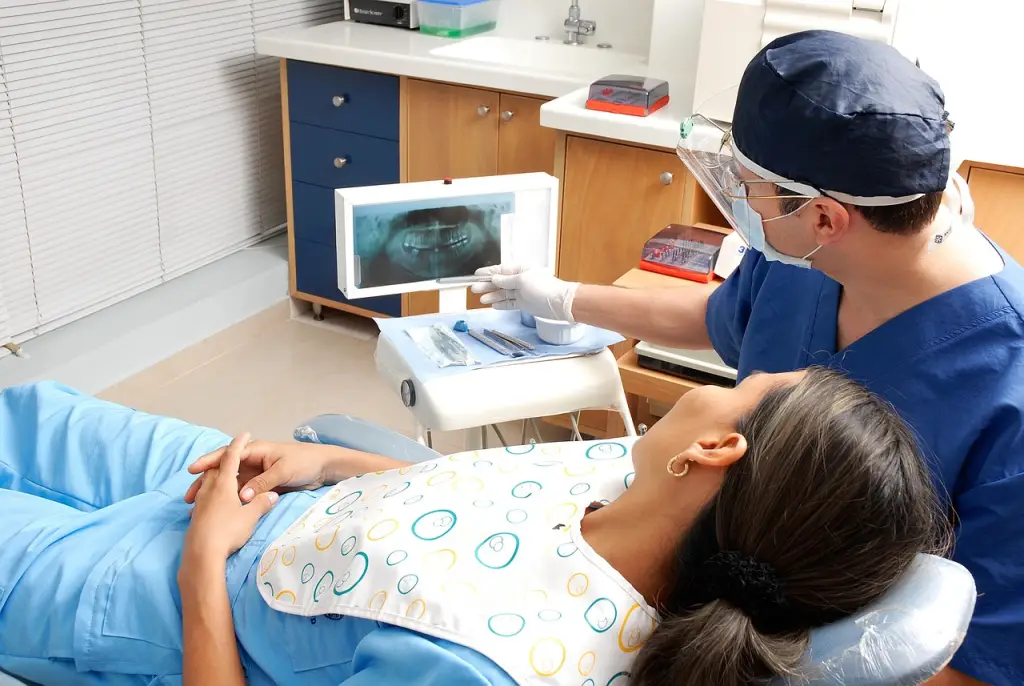Medicaid hospital visits can feel confusing when you need urgent care. You might wonder if your coverage includes emergency room trips. You may also worry about paying large hospital bills. Understanding how Medicaid helps with hospital visits gives you peace of mind.
This guide explains Medicaid coverage for ER visits in simple terms. You will learn what Medicaid pays for your hospital stays. Does Medicaid pay emergency room bills completely? You will discover Medicaid copays for hospital and ER services.
We explain Medicaid hospital visit benefits in easy words. Understanding your rights as a Medicaid patient is essential. This article helps you navigate hospital and emergency room coverage confidently.
Table of Contents
Understanding Medicaid Coverage for Hospital Services

Medicaid provides essential health coverage to millions of Americans across the nation. Your eligibility depends on your income and your state’s status regarding Medicaid expansion. Knowing your coverage helps you access care without financial worry.
What Medicaid Is and Who It Covers
Medicaid is a joint federal-state program providing health insurance. Your state operates its Medicaid program alongside federal government support. The state program serves low-income families, children, pregnant women, and individuals with disabilities.
As of 2026, 40 states, plus Washington, D.C., have expanded Medicaid. These expansion states cover adults earning up to 138% FPL. Ten states have not expanded Medicaid: Alabama, Florida, Georgia, Kansas, Mississippi, and South Carolina. Tennessee, Texas, Wisconsin, and Wyoming complete the list of non-expansion states.
Your income determines your eligibility in your specific state. Each state sets its own rules within federal guidelines. You can apply for Medicaid at any time, or generally, when you are eligible. No special enrollment period is needed, like with other insurance.
Mandatory vs Optional Benefits Under Medicaid
Federal law requires all states to cover certain hospital services. These mandatory benefits include inpatient hospital care and emergency services. States cannot deny coverage for federally mandated emergency care services.
Optional benefits vary by state but are generally aligned with federal guidelines. Your state may offer additional services beyond those required by the federal government. Check your eligibility for admission to the hospital program for complete details on benefits.
How Medicaid Helps Hospital Visits

Medicaid hospital visits include comprehensive coverage for inpatient care needs. Your coverage protects you from the overwhelming costs of medical bills during hospitalizations. Understanding what Medicaid covers helps you use your benefits wisely.
Inpatient Hospital Services Coverage
When you need to be admitted to the hospital, Medicaid covers your entire stay. Your inpatient coverage includes room and board during admission. Nursing in total care and medical monitoring are fully covered services.
Medicaid pays for diagnostic tests you need during hospitalization. Laboratory work, X-rays, CT scans, and MRIs are included. All medically necessary tests are fully covered under your plan.
Surgical procedures performed during your hospital stay are covered. Your surgeon’s fees and operating room costs are included in the total. Anesthesia services receive full payment from your Medicaid coverage.
Medications administered during your hospitalization are covered at no cost. IV medications, injections, and oral medicines are all included. You won’t pay separately for drugs given during admission.
Intensive care unit services are covered when medically necessary. ICU monitoring equipment and specialized staff are included as benefits. Patients who receive extended ICU stays receive continued coverage based on medical needs.
Admission Requirements for Medicaid Hospital Visits
Your doctor must provide a written order for hospital admission. This order confirms your medical need for inpatient services coverage. The hospital reviewer will verify medical necessity.
The two-midnight rule helps determine if admission is appropriate. If your doctor expects you’ll need two midnights of care, admission will continue. The status applies when care needs have a shorter duration.
Observation status means you’re an outpatient receiving extended care. Your coverage differs slightly from coverage for admitted inpatient status. Always ask your care team about your admission status.
Length of Stay and Benefit Periods
Medicaid doesn’t limit the duration of your hospital stay. Your coverage will continue as long as the care remains medically necessary. Regular reviews ensure your admission still requires hospital-level care.
State Medicaid programs conduct utilization reviews during extended stays. These reviews protect both you and the program’s resources. Your doctor provides documentation supporting your continued hospitalization needs.
Medicaid Coverage for ER Visits

Emergency room services under Medicaid receive special federal protection. Your ER coverage is mandatory across all 50 states. Understanding your ER benefits helps you access timely emergency care.
Emergency Room Services Under Medicaid
Federal law requires all state Medicaid programs to cover ER visits. Your ER coverage applies regardless of your state’s status regarding Medicaid expansion, which may affect your access to immediate emergency health care and require prior authorization from Medicaid.
The Emergency Medical Treatment and Active Labor Act (EMTALA) protects your emergency care rights. EMTALA requires hospitals to screen all patients seeking emergency care. Your ability to pay cannot influence emergency care decisions.
What Constitutes a True Emergency
A true emergency is a condition that poses a significant threat to your health, such as a medical emergency. Severe symptoms require immediate attention, such as those conditions. Your reasonable belief determines whether the symptoms warrant emergency care.
Chest pain or heart attack symptoms always warrant ER visits. Difficulty breathing or severe asthma attacks require emergency care. Severe injuries with significant bleeding need immediate medical attention.
Stroke symptoms, such as sudden numbness or confusion, require ER evaluation. Severe allergic reactions, such as those causing swelling or difficulty breathing, are considered medical emergencies. Active labor and pregnancy complications require emergency room care.
Uncontrolled severe pain that prevents normal function warrants increasing the charges. Mental health crises, including suicidal thoughts, require emergency intervention. Severe abdominal pain lasting more than urgency of the condition.
Non-Emergency ER Visits
Some states charge higher copays for non-emergency ER use. After medical screening confirms no emergency exists, additional charges may apply. Your state must provide alternative care options before increasing the charges.
The hospital performs a medical screening examination on every patient. Only after screening can staff determine the urgency of your condition. Screening protects you from inappropriate emergency care denials.
ER Visit Process for Medicaid Beneficiaries
Upon arrival, you receive triage to assess your symptoms. The triage nurse determines how quickly you need to be evaluated. Your wait time depends on the severity compared to others.
A qualified medical provider performs your screening examination. This examination determines if an emergency medical condition exists. Your insurance status doesn’t affect your screening or stabilization.
Treatment continues until your emergency condition stabilizes. Stabilization means your condition won’t worsen during transfer. You may receive admission, transfer, or discharge after you have been stabilized.
Does Medicaid Pay Emergency Room Bills?

Many people wonder about Medicaid coverage for emergency room expenses. Your Medicaid coverage pays for emergency room bills comprehensively. Understanding payment details eliminates confusion about your financial situation.
Medicaid pays hospitals directly for emergency procedures performed in the ER. Medicaid reimburses hospitals for all services from arrival to discharge. Triage assessment and medical screening examination are fully covered.
Diagnostic imaging, including X-rays and CT scans, is fully covered by insurance. Blood work and laboratory testing are covered completely. Medicaid pays for emergency procedures performed in the ER.
Medicaid reimburses physician services during your ER visit. Specialist consultations in the ER are also covered services. All medications administered during your visit are covered under the benefits.
Medical equipment used during your emergency care is covered. Splints, casts, bandages, and supplies receive full payment. Your coverage eliminates surprise bills for emergency medical supplies.
Payment Structure and Reimbursement
Hospitals submit claims directly to your state Medicaid program. Medicaid reimburses hospitals based on established state payment rates. You never receive bills for covered emergency services.
Balance billing protections prevent hospitals from charging you extra. The hospital accepts Medicaid payment as full payment. You only pay applicable copayments if your state charges them.
Out-of-State Emergency Coverage
Medicaid covers emergency care in other states under specific circumstances. Four situations trigger out-of-state emergency coverage under federal rules:
First, if returning home would endanger your health or life. Second, when services are more readily available across state lines. Third, when residents commonly cross state borders for routine care. Fourth, in any true emergency with no alternatives.
Always keep your Medicaid card accessible when traveling outside your state. Emergency rooms verify your coverage through national Medicaid databases. Your out-of-state emergency care receives the same comprehensive coverage.
Medicaid Copays for Hospital and ER

Cost-sharing requirements vary significantly between states and populations. Understanding your potential copayments helps you budget for healthcare expenses. Many Medicaid beneficiaries pay nothing for emergency or hospital care.
Federal Copayment Guidelines
Federal law caps total Medicaid cost-sharing at 5% of quarterly household income. This protection prevents excessive out-of-range medical expenses from $0 to the total. States cannot exceed this federal cap regardless of the services used.
Maximum copayment amounts depend on what your state pays providers. Copays for services costing under $10 cannot exceed $0.50. Services costing $10-$25 that allow up to a $1.00 copay have a maximum of the amount.
Services costing $25-$50 permit copays up to $2.00 maximum. For services costing over $50, copays can range from $0 to $3.00. These nominal amounts apply to beneficiaries below 150% FPL.
Who Is Exempt from Copays
Children under 18 years never pay Medicaid copayments. Pregnant women receive complete exemption from all cost-sharing. These protections ensure that vulnerable populations have access to the needed care.
Residents living in nursing homes or long-term care facilities pay nothing for their care. Terminally ill individuals receiving hospice care are entirely exempt. These exemptions recognize exceptional medical and financial circumstances.
Emergency services are always exempt from copayments in all states. You never pay copays for proper emergency care, regardless of income. Family planning services also receive exemption from any cost-sharing.
Preventive care for children under 21 is exempt from copays. This insurance pays for visits and immunizations at any location. The exemption encourages young people to engage in regular preventive healthcare.
State-by-State Copay Variations
Copayment policies differ dramatically between states across the country. Some states charge no copays for any Medicaid services. Other states implement nominal copays for specific service categories.
Does Medicaid pays ER copays depends entirely on your state’s policies. Most states exempt emergency room visits from all copayments. States charging ER copays only apply them to non-urgent, all times visits.
Inpatient Hospital Copays
Some states charge daily copayments for inpatient hospital admissions. These daily amounts typically range from $1 to $3 per day. Most states cap total hospital copays at specific maximums.
States may charge co-owners who require non-preferred services to pay half their payment amount. However, emergency and pregnancy-related services remain exempt at all times. Your total copays cannot exceed the 5% quota, regardless of any income cap.
Income-Based Copayment Tiers
Beneficiaries below 150% FPL pay only nominal copayments. These small amounts rarely exceed $3 for any service. Protection is available for low-income families who require frequent care.
People above 150% FPL may face higher cost-sharing. However, all copayments remain subject to federal maximum limits. Your coverage cannot be denied solely because of an inability to pay copayments due to age.
Medicaid vs Medicare Hospital Coverage

Understanding the differences between these programs helps you maximize your benefits. Both programs cover hospital services but operate very differently. Some individuals qualify for both programs simultaneously, resulting in dual eligibility.
Key Differences Between Programs
Medicare is a federal health insurance program for people aged 65 and older. Younger people with specific disabilities also qualify for Medicare coverage. Medicare doesn’t consider your income when determining eligibility.
Medicaid is a joint federal-state program that provides insurance for low-income individuals. Your income determines Medicaid eligibility in your state. Age doesn’t matter for Medicaid, unless you fall into one of the special categories.
Hospital Coverage Comparison
Medicare Part A covers inpatient hospital care for Medicare beneficiaries. You pay a deductible of $1,676 in 22″6 for each benefit period. Days 61-90 require daily Medicare and Medicaid payments from you.
Medicaid hospital coverage typically requires no deductible payment from you. Your inpatient stay copays remain minimal or completely exempt. Medicaid often covers services Medicare doesn’t include at all.
Dual Eligibility Benefits
If you qualify for both programs, you’re considered “dually eligible.” Medicare pays first for services covered under both Medicare and Medicaid. Medicaid pays your Medicare premiums, deducting coinsurance amounts.
Dual-eligible special needs plans coordinate both coverages for you. These plans simplify accessing your full range of benefits. Consider D-SNP plans if you qualify for both the Medicare Advantage and D-SNP programs.
Medicaid Hospital Deductibles Explained

Most people associate health insurance with high deductibles annually. Medicaid operates differently from private insurance in terms of deductibles and copays. Your financial protection under Medicaid exceeds most private plans significantly.
No Annual Deductibles for Medicaid
Traditional Medicaid programs don’t charge annual deductibles for hospital care. Your coverage begins immediately, without requiring you to meet spending thresholds first. This protection helps you access care without interruption. Medicaid managed care plans may include small deductibles. However, these amounts remain far lower than private insurance deductibles. Your state’s program structure determines if any deductible applies.
Medicaid Hospital Stay Benefits
Your Medicaid hospital also includes comprehensive inpatient services. From admission through discharge, coverage remains uninterrupted. Length of stay doesn’t affect your coverage continuation.
All medically necessary services during hospitalization receive full coverage. Your doctors, nurses, medications, and treatments are all included. Rehabilitation services provided during admission are also covered under Medicaid.
Post-discharge care planning receives coverage during your hospital stay. Social workers help arrange follow-up care and services needed. This comprehensive approach supports your full recovery after discharge.
Medicaid Emergency Room Visit Requirements

Accessing emergency care under Medicaid with minimal paperwork initially. Your immediate medical needs take priority over insurance verification. Understanding these requirements helps you access care appropriately.
No Prior Authorization Needed
Emergency services never require advance approval from your Medicaid plan. Federal law prohibits requiring authorization for emergency care. Your medical need determines access to care, not insurance approval.
Even if your managed care plan usually requires referrals, emergencies are exempt. Go directly to the nearest emergency room in the event of an emergency. Your coverage applies regardless of network hospital locations.
What to Bring to the Emergency Room
Keep your Medicaid identification card accessible at all times. Your card contains information hospitals need to verify coverage. Carry it in your wallet alongside other important identification.
Bring photo identification, such as a driver’s license or state identification. This helps verify your identity and matches you with the appropriate coverage. If you have a list of medications, bring it to inform your treatment.
Current prescription bottles help doctors understand your existing treatments. This information prevents dangerous drug interactions during emergency treatment. A list of allergies protects you from harmful medications.
Hospital Registration Process
Upon arrival, registration staff will request your Medicaid information. Provide your Medicaid ID number and identification card promptly. The hospital verifies your active coverage through state databases.
If you don’t have your card, staff can look up your coverage. Your name and date of birth help locate your account. Emergency treatment proceeds even before verification is completed fully.
After Emergency Care
Review your discharge instructions carefully before leaving the hospital. These instructions explain medications, follow-up appointments, and warning signs. Ask questions if anything seems unclear to you.
The hospital submits your bill directly to your state Medicaid program. You should not receive bills for covered emergency services. Contact your Medicaid office if you receive unexpected bills.
Your Patient Rights and Protections

Federal and state laws protect your rights as a Medicaid patient. Understanding these protections empowers you to advocate for proper care. No hospital can deny you emergency treatment based on insurance.
EMTALA Protection Rights
The Emergency Medical Treatment and Active Labor Act protects all patients. This federal law requires hospitals to screen all patients presenting in an emergency. Your insurance status cannot influence your emergency care decisions.
You have the right to a medical screening examination on arrival. The screening determines whether an emergency medical condition currently exists. Only qualified medical personnel are authorized to perform this screening examination.
If your screening reveals an emergency, treatment must continue. The hospital must stabilize your condition before transferring or discharging you. Stabilization means your condition won’t worsen, thereby preventing hospitals from transferring unstable patients inappropriately. Transfers require specific medical justifications and proper documentation. Your safety remains the priority during any necessary transfers.
Medicaid-Specific Patient Protections
Your coverage cannot be denied due to an inability to pay copayments. Federal law prohibits service denial for non-payment of copayments. Emergency services and pregnancy care receive absolute protection at all times.
Prior authorization requirements never apply to actual emergencies. Your managed care plan cannot deny coverage for emergency care. Network restrictions don’t apply when you face medical emergencies.
Billing and Collection Protections
Hospitals cannot balance bill you beyond approved Medicaid copayments. The hospital accepts Medicaid payments as full payment. You should only receive bills for applicable state copayments.
If you receive inappropriate bills, contact your Medicaid office immediately. Your case worker can help resolve billing disputes quickly and efficiently. Keep all billing documents and correspondence for your records.
Collection agencies cannot pursue you for covered Medicaid services. Report inappropriate collection attempts to your state Medicaid program. Your protections extend beyond treatment to include billing practices as well.
Special Situations and Considerations

Certain situations create unique coverage scenarios that require an exceptional understanding. Your specific circumstances may affect how coverage works in practice. Knowing these situations helps you navigate coverage confidently.
Dual Eligibility with Medicare and Medicaid
If you have both Medicare and Medicaid, you’re dually eligible. Medicare pays first for services covered under both Medicare and Medicaid. Medicaid then covers your Medicare cost-sharing amounts completely.
Qualified Medicare Beneficiary programs help with Medicare premiums and deductibles. Medicaid pays your Part A and Part B costs. Your out-of-pocket expenses drop significantly with dual coverage.
Consider enrolling in a dual-eligible plan that participates in the network to coordinate your Medicare and Medicaid benefits seamlessly. You receive comprehensive coverage in the event of an emergency overall.
Medicaid Managed Care Plans
Many states operate Medicaid through managed care organizations MCOs. Your manapplied tod care plan must cover all mandatory benefits. Emergency services receive coverage regardless of whether the hospital participates in the network.
Network considerations don’t apply during true medical emergencies anywhere. Go to the nearest emergency room in the event of an emergency. Your plan cannot deny coverage for out-of-network emergency care.
Prior authorization waivers generally apply automatically for more stringent services. You don’t need approval before seeking emergency room treatment. Retrospective review denies coverage for obtaining a reasonable emergency visit.
Medicaid Expansion vs Non-Expansion State Differences
Coverage eligibility differs dramatically between expansion and non-expansion states. Expansion states cover adults up to 138% FPL. Non-expansion states generally maintain more stringent eligibility requirements overall.
In non-expansion states, childless adults face significant challenges in obtaining coverage. You may not qualify for Medicaid, regardless of your income. Emergency care still receives coverage if you are eligible otherwise.
The coverage gap affects millions in the ten non-expansion states. You earn too much for Medicaid but too little for marketplace subsidies. However, emergency services remain protected under EMTALA regardless.
How to Use Your Medicaid for Hospital Visits

Maximizing your Medicaid benefits requires understanding proper usage strategies. Knowing when and how to access care prevents problems. Good preparation ensures smooth experiences during medical emergencies.
Before You Go to the Hospital.
Keep your Medicaiification card in your wallet at all times. Store important medical information with your card for emergencies. Include all that requires contacts and medications at all times clearly.
Understand your specific benefits by reviewing the coverage in your state. Know which hospitals participate in your managed care network. However, remember that emergencies always take precedence over network restrictions.
Know the difference between true emergencies and urgent care needs. Emergencies include life-threatening conditions that require immediate intervention at all times. Urgent care handles severe but non-life-threatening conditions appropriately.
Primary care visits handle routine medical needs and chronic conditions. Save emergency routes for actual emergencies when possible. Using appropriate care levels reduces system strain for everyone.
At the Hospital or Emergency Room
Present your Medicaid card immediately upon arrival at registration. Provide accurate information about your symptoms and medical history. Honesty enables medical staff to provide timely and appropriate treatment.
During registration, verify that the staff have your correct information. Verify that your address and contact information are up to date. Update any changes to ensure future correspondence with you is accurate.
Ask questions about your treatment plan and expected outcomes. Request clarification if medical terminology seems confusing or unclear. Understanding your care helps you follow discharge instructions properly.
After Your Hospital Visit
Read all discharge paperwork carefully before leaving the facility. Thoroughly understand your medication instructions and dosage schedules to ensure accurate administration. Schedule follow-up appointments before leaving whenever possible.
Fill prescriptions promptly after discharge from the hospital or ER. Your Medicaid coverage typically includes outpatient prescription drug benefits. Some states may charge small copays for medications.
Watch for bills that seem incorrect or unexpected after the fact. Contact your Medicaid office if you receive inappropriate charges at any time. Billing issues should be addressed promptly to prevent collection problems later.
Follow up with your primary care doctor after hospitalization. Your PCP coordinates your ongoing care and monitors recovery. This continuity of care improves outcomes and prevents complications.
Keep copies of all medical records and bills received. Keep your healthcare documents in an accessible location at all times. Good recordkeeping helps resolve any future coverage questions quickly.
Current Policy Landscape for 2026

Medicaid policy continues evolving with federal and state changes. Recent legislative changes have significantly affected coverage and requirements. Staying informed helps you maintain continuous access to coverage.
Recent Medicaid Policy Changes
The Medicaid redetermination process resumed after the pandemic ended. States are reviewing all enrollee eligibility annually. Keep your contact information up to date to ensure you receive timely renewal notices.
Compliance requirements for states continue tightening through December 2026. States must meet federal renewal requirements or face enforcement. These changes protect your access to continuous appropriate coverage.
Upcoming Work Requirements for Expansion Enrollees
Starting in 2027, nationwide work requirements will affect expansion enrollees. You’ll need to work, volunteer, or attend school for 80 hours per month. Exemptions are available for parents, students, and individuals with medical conditions or disabilities.
Medical frailty exemptions protect people with chronic health conditions. Parents or caregivers of children under 13 are eligible for exemptions. Students attending school meet requirements through their educational activities.
Copayment Changes for 2028
Beginning in October 2028, new copayments will apply to certain Medicaid expansion services. Services may have copays up to $35 for expansion enrollees. However, the 5% quarterly income cap still applies overall.
Emergency services will remain exempt from all copayments regardless. Pregnancy-related care continues to receive full exemption from cost-sharing. Children under 18 are exempt from any copays.
Federal Funding Discussions and State Impacts
Federal Medicaid funding discussions continue affecting state program operations. Changes to federal matching rates could impact state budgets. Monitor your state’s Medicaid news for local policy updates.
Some states have trigger provisions that take effect if federal funding changes. These provisions might automatically adjust eligibility or benefits accordingly. Understanding your state’s policies protects your coverage continuity.
Frequently Asked Questions
Does Medicaid pay for emergency room visits?
Yes, Medicaid pays for all emergency room visits completely. Emergency services are mandatory benefits in all 50 states. You receive full coverage regardless of your state’s status regarding Medicaid expansion. ER bills are submitted directly to your Medicaid program. You only pay applicable state copayments if any apply.
Can I go to any hospital with Medicaid?
During emergencies, you can go to the nearest hospital. EMTALA protects your right to emergency care, regardless of your network affiliation. For planned admissions, check if your hospital accepts Medicaid. Managed care plans may have network requirements for non-emergency care.
What if I receive a hospital bill with Medicaid?
Contact your Medicaid office immediately if you receive unexpected bills. Medicaid pays hospitals directly for covered services rendered. You should only receive bills for applicable state copayments. Billing errors happen, but your office can resolve them.
Do I need pre-approval for emergency hospital visits?
No, emergency services never require prior authorization. Federal law prohibits requiring approval for emergency medical care. Your immediate medical needs take priority over insurance procedures. Managed care authorization requirements don’t apply to actual emergencies.
Conclusion
Medicaid hospital visits provide comprehensive coverage for your emergency needs. Your coverage includes emergency room visits and inpatient hospitalizations. Understanding Medicaid coverage for ER visits protects your financial health. Does Medicaid pay emergency room bills? Yes, Medicaid pays completely.
Medicaid copays for hospital and ER remain minimal or exempt. Your rights under EMTALA and federal law protect emergency access. Medicaid hospital visit benefits explained here empower your healthcare decisions.
Know your coverage, keep your card accessible, and seek care when you need it. Your health matters, and your Medicaid coverage is there to protect you. Contact your state Medicaid office for specific questions about benefits. Visit Medicaid.gov for comprehensive information and resources on the federal program.
